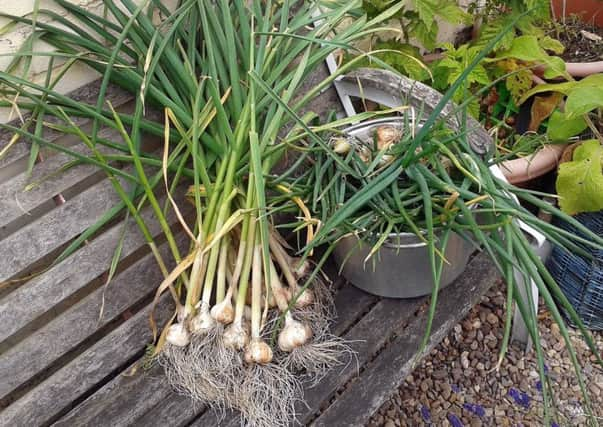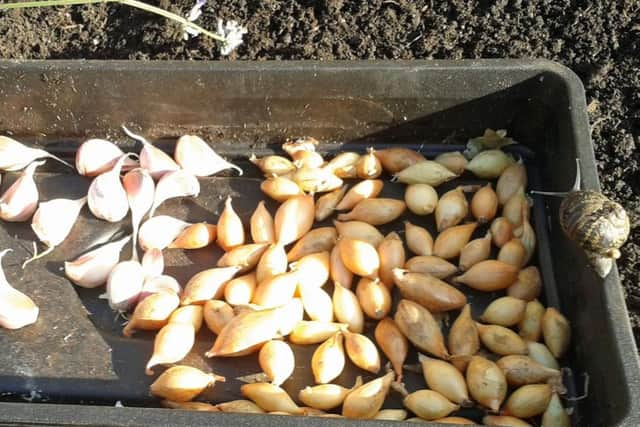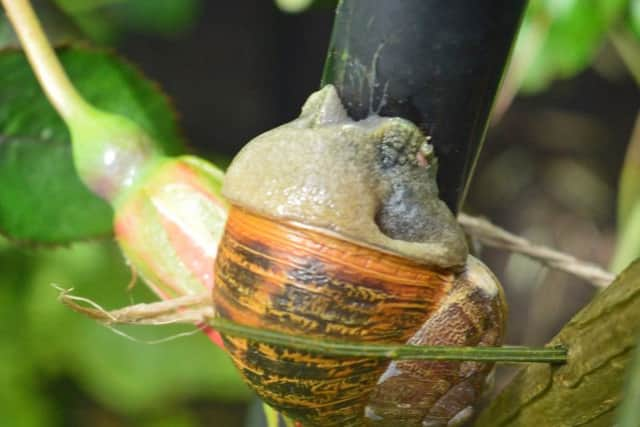Gardening: Deny garlic the cold and you will get one clove
This article contains affiliate links. We may earn a small commission on items purchased through this article, but that does not affect our editorial judgement.


Both autumn and spring-planting varieties need a period of cold so that cloves develop – deny them this and you’ll get one clove.
They need to be in a sunny position so the cloves can bake - that means without competition from weeds, so make sure you hand weed - hoes may damage bulbs.


Advertisement
Hide AdAdvertisement
Hide AdFor spring-planting types, February-April is the usual recommended planting time, so if you haven’t planted yet, get them is as soon as possible.
For both, make sure the ground is not waterlogged or frozen. For every square metre, add 50g of general-purpose fertiliser.
Plant individual cloves, keeping the papery husk on. Do not plant supermarket varieties – always buy bulbs from a mail order seed company or nursery.
Ensure the soil is well-drained and plant cloves 10cm apart and 2.5-5cm deep, in rows 30cm apart, with the wide root side facing down.


Advertisement
Hide AdAdvertisement
Hide AdPrevent birds from pulling up the cloves by covering the rows with horticultural fleece.
Water every week during bulbing (mid-May and June).
Grow at a glance: spring garlic
PLANTING TIME: February-April.


HARVESTING TIME: mid-summer – early autumn.
PLANTING DISTANCE: 10-15cm (4-6 inches) apart, 2.5-5cm (1-2 inches) deep, 30cm (1 ft) between rows.
ASPECT AND SOIL: Full sun, well-drained, non-acid soil.
HARDINESS: Hardy.


DIFFICULTY: Easy.
RECOMMENDED VARIETIES: Lautrec Wight, Germidour, Purple Heritage Moldovan, Solent Wight, Wight Cristo, Tuscany Wight, Carcasonne Wight, Picardy Wight, Flavour, Cledor.
JOBS TO DO THIS WEEKEND
Slugs and snails will become very active. Most newly-emerging shoots will be at risk. Act now and destroy their egg clusters, translucent milky spheres, usually laid in nooks and crannies in the soil, and down the sides of pots. Delphiniums and newly-emerging hostas in particular are at risk.
Advertisement
Hide AdAdvertisement
Hide AdOnce the soil has warmed up enough, apply the slug nematode. They will get rid of soil-dwelling slugs but not snails. Use all controls available.
Stop weeds before they start. Cover a weedy, empty patch of ground with black plastic, cardboard or carpet to stop unwanted plants growing.
Russian comfrey plants – Bocking 14 – are a must to make your own plant food. The leaves can also be used as a compost activator, a mulch, or a liquid feed. Bocking 14 won’t take over your garden – but beware – the plant food it makes absolutely stinks!
Continue to prick out seedlings before they become straggly.
Advertisement
Hide AdAdvertisement
Hide AdTop-dress containers. Scrape the top 4cm/2ins of soil off, and replace with new compost. Finish with a layer of horticultural grit to retain moisture.
Make sure automatic vents in the greenhouse are working properly, and open the door on sunny days. Temperatures will soar inside a closed greenhouse. Avoid fungal diseases by watering from below to avoid wetting foliage. Don’t let plants stand in (still icy cold) water for longer than 10 minutes.
Feed hedges with a top dressing of garden compost or well-rotted manure, or mulch with lawn mowings.
Plant evergreen hedges. Prepare the site well, adding a couple of handfuls of garden compost per plant. Water well over the next few months as the plants settle in.
Advertisement
Hide AdAdvertisement
Hide AdDivide overgrown clumps of herbaceous perennials. Water well after transplanting, and keep moist in dry spells.
Aphids can multiply rapidly during mild spells. Remove early infestations by hand to prevent the problem getting out of hand. Protect sweet pea plants in particular, as they can get sweet pea viruses.
GET IN TOUCH
For more on these topics, plus cook what you grow, traditional recipes, North East information, environmental news and more, log on to www.mandycanudigit.com (now smartphone friendly), www.sunderlandecho.com/gardening, follow me on Twitter @MandyCanUDigIt or you can like me on Facebook at Mandycanudigit